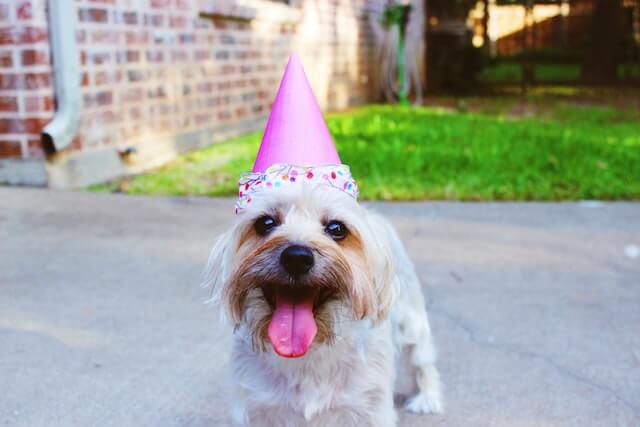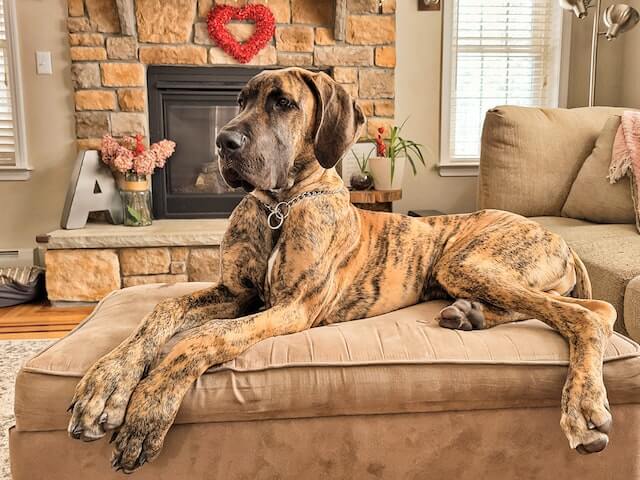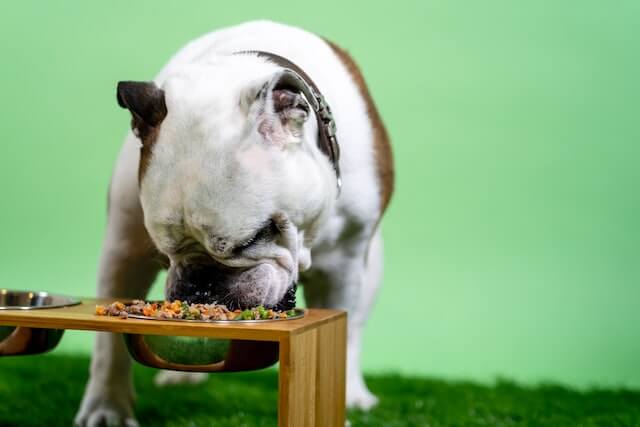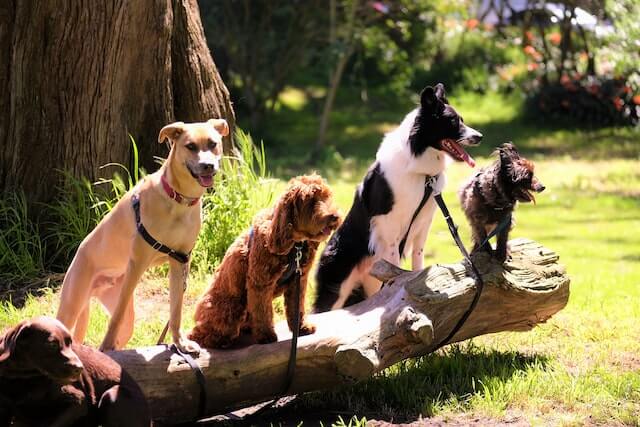Having a puppy in the house is not only a joy but also a great responsibility. One of the burning questions that interest owners is the question, “When do dogs stop growing?”. If the pet is taken from a breeder, the question disappears by itself: it is enough to look at his parents and make sure of the purity of the breed in the puppy card. To answer this question we need to consider several factors. Let’s examine which ones.
The stages of a dog’s growth
A healthy and fully developed dog grows from the first days of life with a certain pattern. These include
- growth;
- changes in weight;
- features of physiology;
- changes in appearance.
The process of maturation takes different amounts of time depending on the breed. It includes both increases in size and changes in development parameters. There are average indicators that a puppy grows and develops properly and when do puppies stop growing. Several stages of puppy growth and development:
Embryonic Stage
This is the period when the puppy is still in the womb. The puppy’s internal organs, bone skeleton, and immunity are formed. Most scientists believe that it is during this period that the character traits of the animal are formed. And here it is worth choosing the future pet more carefully, based on the data about its parents, and the reputation of the breeders.
Breastfeeding stage – from 0 to 1.5 months
The first ten days from the moment of birth are called the vegetative period of development. During this time, puppies’ eyes open and they begin to put on weight, which can double during this time. The baby begins to get accustomed to the smells and temperature changes around it, its source of nutrition is the mother’s milk. The third week of life is a period of transition. During this time (from day 14 to 18), puppies’ ear canals open, begin to take their first steps and tend to empty themselves outside the common cot.
During this time, the breeder is responsible for the well-being and growth of the little ones, and he also has all the responsibility for the little pets. If the puppy is strong and the future owners have experience in feeding one-month-old puppies, it is possible to wean him a little earlier, in order to be fully confident in his proper feeding and further growth.
The intensive growth stage – 1.5 to 6 months
This is when a puppy is growing very vigorously, with the changing of his milk teeth. It is necessary to monitor the full diet of the puppy with the presence of calcium, phosphorus, and magnesium. Puppies should be gradually weaned from their mother’s milk and accustomed to new foods. Their field of interest expands, and they become familiar with people and various objects. The puppy is accustomed to the name, toilet, are taught elementary commands and basic rules of behavior.

Dog development from 6 to 12 months
This stage is quite varied and proceeds depending on the breed of puppy. It may be accompanied by active growth, slowing down, or a complete stop. After 6 months of age, the flat bones begin to develop. The sternum increases vigorously and dogs continue to grow, but in width rather than height. This process actively continues for about six months, and then also lasts, but at a much slower pace.
The development of dogs is strongly influenced by the first mating, and then the developmental stages come to an end. This is one reason to avoid early mating, otherwise, the pet’s growth processes are disrupted.
The formation stage of the adult dog
Its duration is on average 2-2.5 years. What happens during this time: the milk teeth are replaced by permanent teeth, puberty enters its peak phase, and females have their first heat. Psychologically, this is when the dog is defining its identity, defining its role in the family (herd). The dog seeks to actively communicate with people and companions. The animal continues to gain muscle mass, when do dogs stop growing.
When do dogs stop growing, depending on the breed
So when do dogs stop growing? When determining the correct development of a dog, it is mandatory to take into account his breed and peculiarities of formation. Small animals grow much faster, with large animals completing the process later.
Large breeds
Keeping these breeds will require preparation since these pets require certain investments and careful care. In addition, large dogs require ample space and regular exercise. Large breeds take about two years to reach their final size. These popular breeds include
- Great Dane. When do great danes stop growing? The height is in the range of about 80 cm, and the weight can reach up to 100 kg. At the withers develops for up to 1.5 years, and mass builds for up to 3 years;
- St. Bernards. They are calm and friendly dogs. Once they were actively used as rescuers. Can reach weight over 110 kg, height at withers – 75-90 cm. Intensively develops up to 12 months, and is formed up to 2.5 years;
- Mastiff. Gains weight up to 115 kg with an approximate height of 70-90 cm. It is a brave and friendly dog. The intensity of development is up to 12 months, and the appearance will be formed at 3 years of age;
- Irish Wolfhound. It takes 2 years to complete maturation.

Medium breeds
These animals take longer to grow, up to about 8 to 10 months of age. Popular breeds include
- Laika. This is a great hunter, loyal and friendly dog, but is highly playful. The height is 63 cm. Development lasts up to 9 months;
- Cocker Spaniel. Attractive and graceful dog, also one of the hunting breeds. Size at the withers is approximately 40 cm, and weight – is up to 16 kg. The appearance will be formed at 1 year of age;
- Beagle. Dog of medium size, intelligent and loyal. Growth in the range of 40 cm, and development will last up to 1.5 years;
- Chow Chow. These are guard dogs. At the withers reach 56 cm. Development is completed at 1 year of age;
- Husky. Loyal and peaceful dog, but at the same time is capricious. This is a sledding breed, so it is hardy. Height – 50-60 cm. Grows up to 12 months, then for several more years to gain weight.
Small breeds
Owners of small dogs are often worried about the fact that the puppies finish their growth after 12 months of age. But this is normal because these breeds grow much faster. Certain breeds can reach full maturity at 9 months of age. Popular breeds include
- Pug. An affectionate but naturally lazy breed. Masses up to about 7-9 kg, can reach a height of up to 32 cm. Reaches maturity until 10 months of age, then gains weight intensively;
- Yorkshire Terrier. A popular breed of a small dog. Active growth lasts up to 10 months. Suitable for apartment living;
- Pomeranian Spitz. These small dogs at puberty reach a height of 18 cm, rarely – 30 cm, and an average weight of 2.9 kg. Develops up to six months, then gains muscle mass;
- Pekingese. Friendly dog, but has a willful nature. The average height is 23 cm and the weight – is 6 kg. Can actively grow up to 9 months, in rare cases up to 12 months;
- Dachshunds. Refers to the hunting breeds. Developed up to 9 months, then begin to gain mass;
- Staffordshire Bull Terrier. The approximate height at withers is 30-40 cm and the weight is about 16 kg. Reaches puberty at 1 year;
- Chihuahua. The growth of this breed is no more than 23 cm, weight is about 2.9 kg. Continues its development for up to 9 months.

Mixed breeds
When considering mixed breeds, as a rule, we mean dogs of obscure origin, having a mixture of many atypical colors, shapes, and sizes. Most often this is a consequence of improper breeding. Naturally, it is difficult to know the exact size of a mongrel dog. The easiest option is to find out the size of the parents. When do puppies stop growing (mixed breeds)? Usually, small dogs stop growing after 8 months of age and larger dogs increase in size up to 12 months.
IMPORTANT: Even if you know the parameters of the puppy’s parents, it is not possible to find out exactly how tall the puppy will be, because different factors influence this.
Factors that affect a dog’s growth
Many pet owners worry about how normally their dog is developing. As a rule, they do not notice the growth of the pet, because, after 6 months, the dog forms evenly and gradually. Still, there are certain things that affect it.
- The growth of the animal is influenced primarily by the amount and quality of food. A balanced composition of food rich in protein and fiber will be the key to forming a healthy and strong puppy;
- In order for the puppy to always be toned, and his muscle mass and bone skeleton to form normally, you need to give the dog a moderate amount of exercise all the time. This includes age-appropriate training, regular walks outside, and active play;
- Systematic monitoring by a veterinarian helps to avoid health problems, which is important during the period of growth of the dog;
- Health is a guarantee of normal puppy development. Sick pets begin to spend all their energy on recovery and immune support, and not on their further growth;
- An important role is played by the observance of the emotional state of the pet, the patience of attention, and the kindness of its owners.
When do dogs stop growing and how nutrition affects it
Considers the impact of nutrition on a dog’s growth. Ideally, a feeding regimen that includes the number of feedings, and the composition of the diet based on individual and breed characteristics, should be developed by a cynologist or veterinarian. Breed, height and weight, and other characteristics are taken into consideration when selecting a diet.

On average, a puppy up to 3 months of age should eat at least 5-6 times a day. As the puppy grows older, he should gradually be switched to four meals a day. From 6 months of age, the number of meals can be reduced to two, as for an adult dog.
It sounds counterintuitive, but if you’re raising a large-breed puppy you don’t have to feed him very much. Studies have shown that obesity in puppies, especially in rapidly growing large breeds, can greatly contribute to hip dysplasia and other orthopedic problems. Therefore, do not overfeed your puppy under any circumstances! Observe the necessary standards for feeding.
You should remember that from six months of age, the pet is an intensive recruitment of muscle mass, so the diet must be enriched with proteins, vitamins, and micronutrients.
Dog owners have the choice of feeding their dog’s natural foods or ready-to-eat foods, either dry or wet. Sometimes there is a successful combination of the two types. If the puppy owner chooses to feed a dry or wet type of food, he should choose a good super-premium food. Such products contain all the important micro- and macronutrients, vitamins, in sufficient amounts of proteins, fats, and carbohydrates. The balance of the ready-made food affects the normal development of the puppy. In addition, most manufacturers, producing such products, consider age peculiarities and other nuances.
Those owners who have opted for natural food should observe the following recommendations:
- Eliminate from the diet too spicy, greasy, smoked, or salty food;
- It is best to buy saltwater fish, having previously boiled it. Raw fish and meat can lead to worm infestations;
- Bones are poorly digested, so it is not advisable to give them to your pet;
- Sweets and chocolate cause diabetes, cardiovascular problems, and loss of eyesight and teeth, so they should not be given;
- You can give lean cheese, cottage cheese, boiled meat, raisins, dried fruits;
- Food should be at room temperature, so as not to disrupt the digestion process.

How to find out a pet’s future size
To know the size of puppies sometimes can not even be a professional cynologist. But it is possible to try, as information is often obtained after examining the head and chest of the animal.
It is also important to pay attention to the following points:
- Condition of the skin. The puppy will be large if the canine’s skin easily gathers into folds (some “growing room”). If the skin is slightly taut – the pet will be about average size;
- Body proportions. If the body is proportional, the animal is likely to grow small. A firm chest and pelvis and a large head are signs of larger dogs.
- Paws. The pet can be classified as an average dog if they are small and thin. If the animal stands confidently on its feet, it indicates a large breed.
The easiest way to determine a dog’s future size is to know its age. For example, if a puppy is 2 weeks old and has a weight of about 1.4 kg, an adult dog will have a weight of about 14-18 kg. As for the size at the withers, small dogs stop developing after six months, and large dogs – up to 12-16 months. The best way to orientate yourself is to find out the parents of the dog. If they are small, then the size of the puppy will not be able to exceed them.
Cynologists say that adult animals of medium size have a weight of 2 times more, as opposed to their weight at 3 months. As for large breeds, these pets most often gain weight 2 times what they were at 5 months. Thus, in the long run, the owner will be able to know the size of the pet approximately. For more information about when do dogs stop growing and about the age and size of the pet, it is best to consult an experienced cynologist.
Conclusion
To answer the question “When dogs stop growing?”, you can use the following indicators: weight, chest circumference, height at the withers, and height of the paws. Understanding how an animal develops contributes to the proper selection of food, training methods, and variation in his activity and rest. Almost always the delay in the growth and development of the dog has a reason, and almost all of them can be eliminated. All it takes is a timely visit to a knowledgeable veterinarian.
